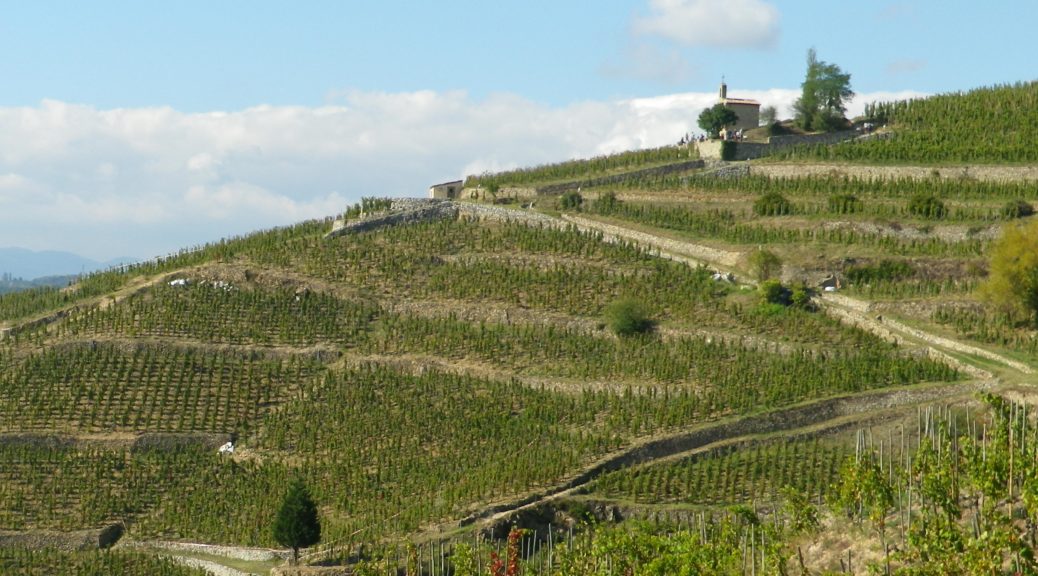Hallowed sites exist in many forms throughout the world, and whether they are religious, ethnic or historic, all are sacred to its devotees. I recently visited such an area. It is revered by those who prefer powerful, age-worthy, Rhone red wines; who worship them, sadly often from afar, because the prices can reach astounding levels. This is the story of a pilgrimage to Tain.
Tain, or Tain l’Hermitage, as the town has become officially known, contains within its boundaries the appellation known as Hermitage, one of France’s most prestigious wine appellations. More like a village than a small town, it has a history that predates even the Romans. It’s reputation as a wine center is even more august, attracting pilgrims from every corner of the world.
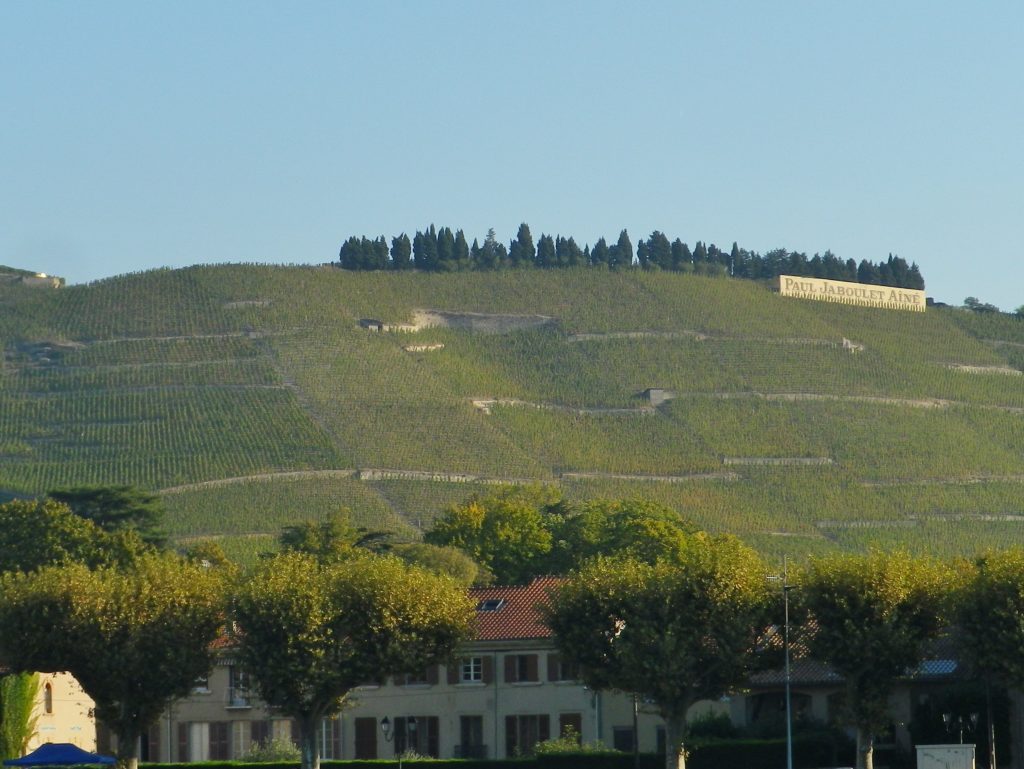
I travelled there to hike the hallowed hills around Tain. From the start of the hike, in the center of town, the trail is within spitting distance of top wineries such as Chapoutier, Paul Jaboulet Aine, and J.L. Chave. But the true beginning is by the Cave de Tain.
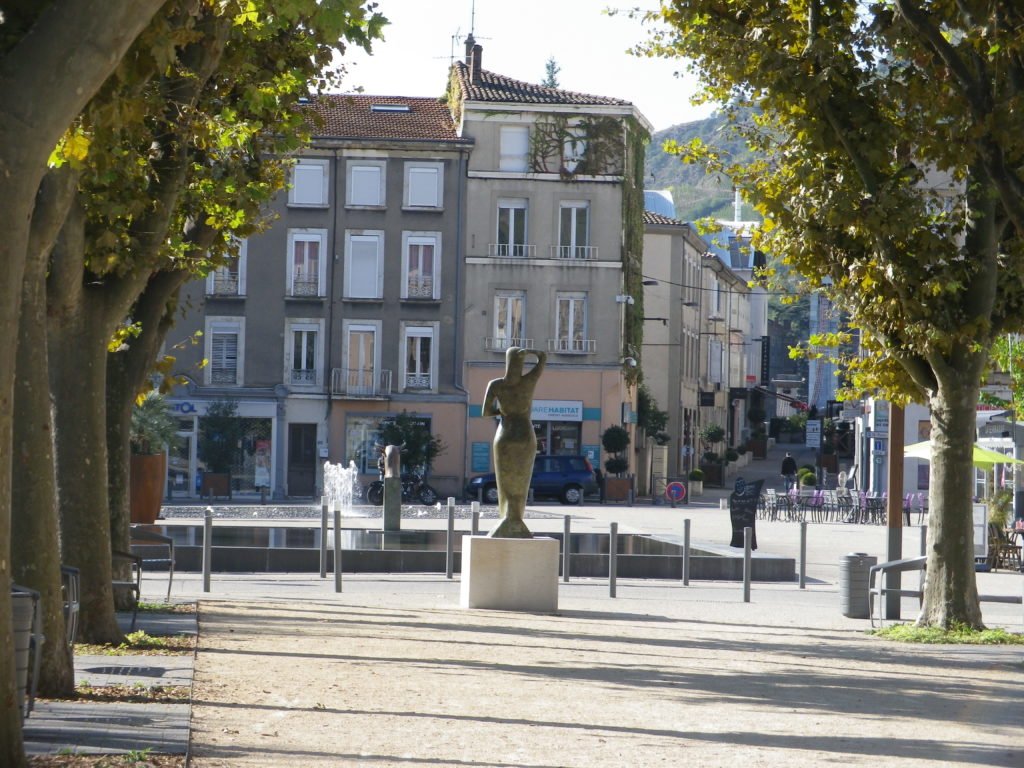
This cooperative deserves much of the credit for the trail which does so much to introduce visitors to the terroir that is Hermitage. Right from the start, the educational aspects of the trail demonstrate a reverence for the land, and the traditions that make up this appellation. At the mouth of a narrow draw, by Placard 2, hikers come face to face with one hundred-year old Marsanne vines, the juice of which enters into Cave de Tain’s Au Coeur des Siecles line.
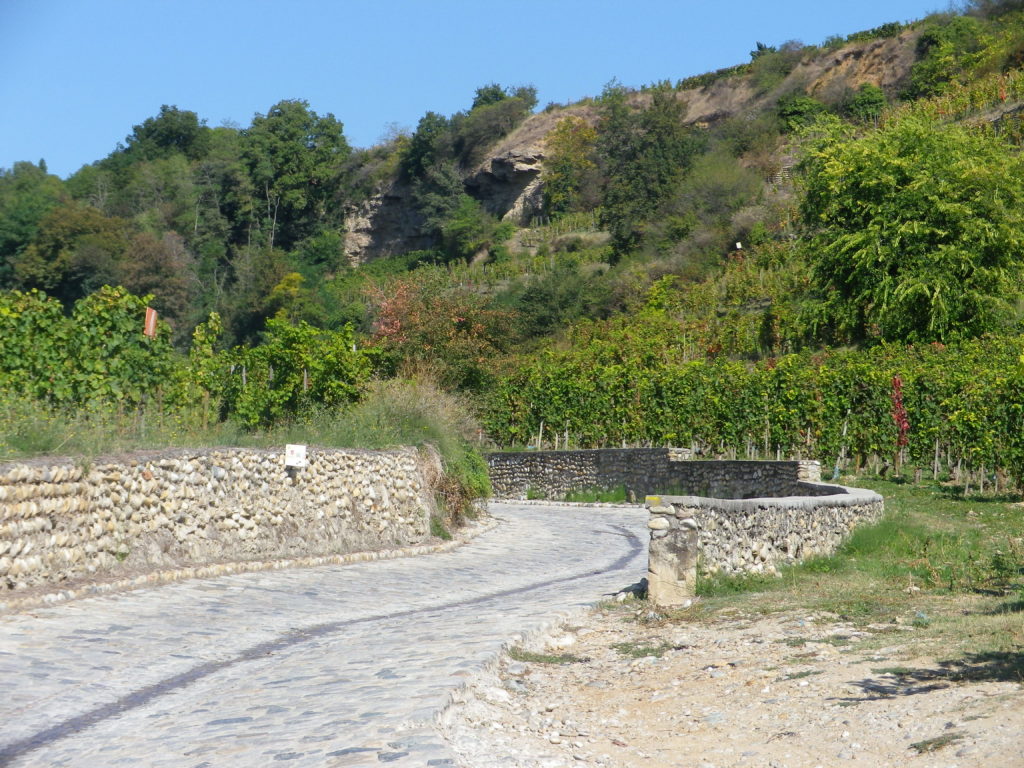
On entering the draw, raw gashes in the hillside reveal the true nature of this lower terroir: essentially alluvial, layers of sand and pebbles, loosely accreted over eons, subject to breaking down, leaving the gouges in a hillside otherwise covered by vines. The draw presents two other observations as well. In areas where there is limited sunlight, or it is otherwise unfavorable for vines, alternative crops such as cherry or apricot trees grow. The second observation, more personal, is that the shady draw is steep, yet it reaches the top fairly quickly, entering briefly into the Crozes-Hermitage appellation.
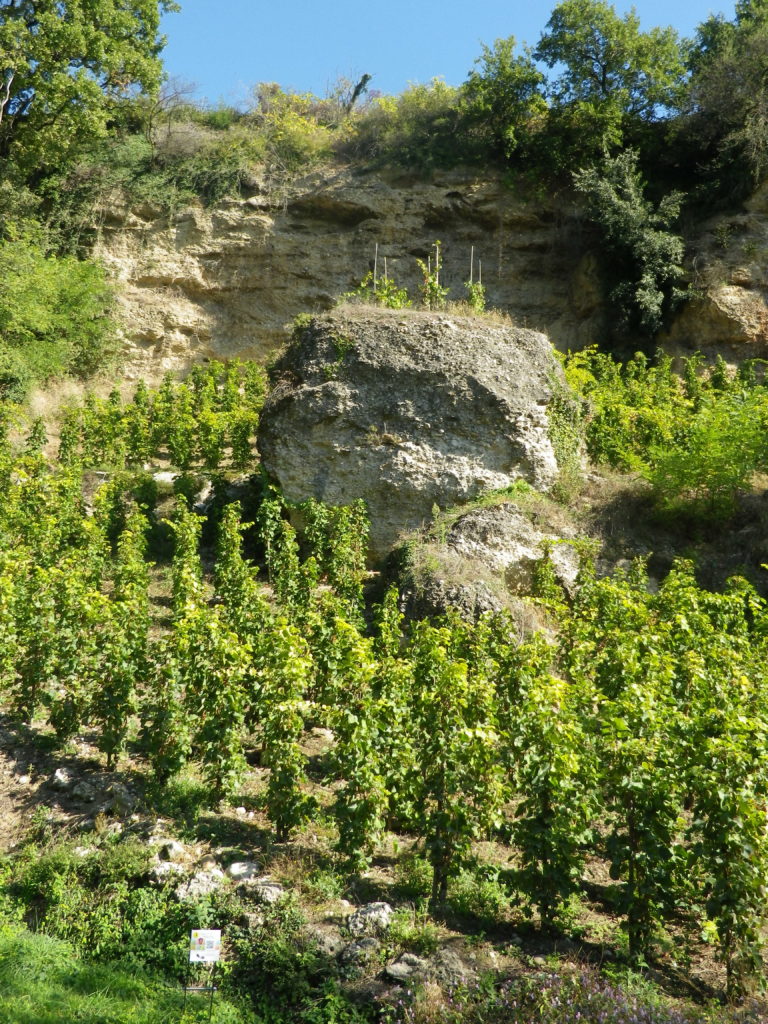
Walking along the top of the saddle affords great views of the Rhone Valley, as well as the hinterlands behind Tain and its hills, before re-entering Hermitage vineyards. Between Placard 2 and Placard 6, there is a sea change of geology and exposition. The granitic nature of the soil becomes much more evident, exposed as scattered masses of dark, rugged rock face. It is also easy to see why certain named parcels, La Chapelle, for example, are ideal for viticulture. The vines grow in this rock-filled bowl facing south and west. The direction maximizes exposure to the sun; the rock captures the heat of the sun; and the bowl helps to minimize its dissipation.
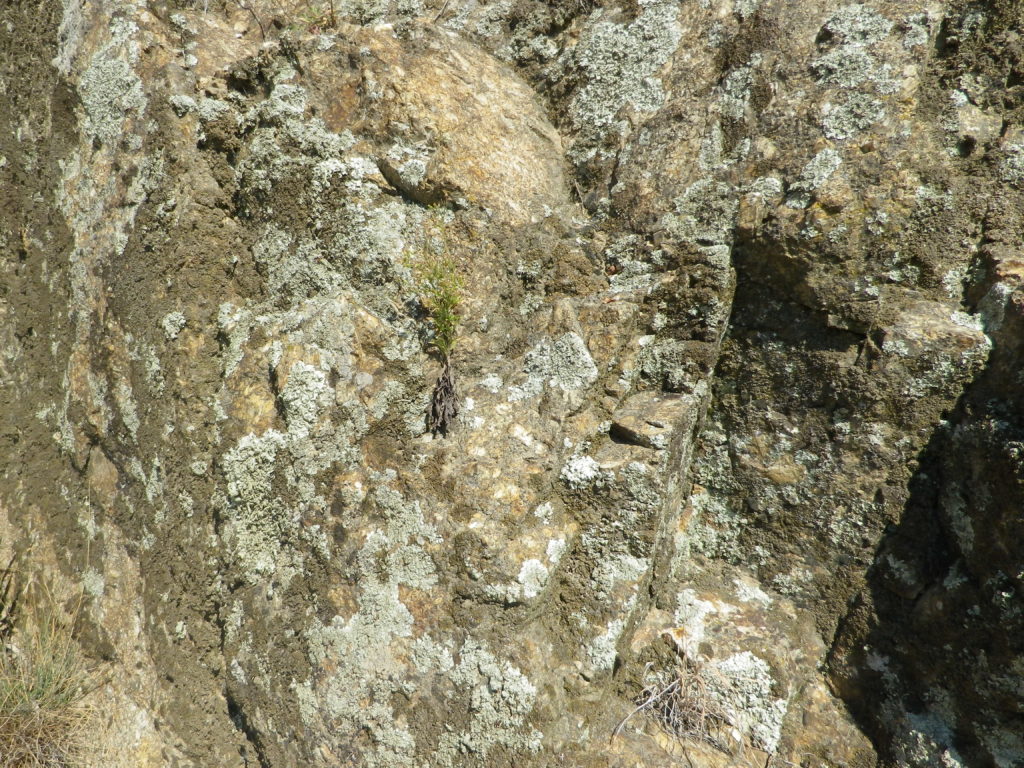
Past the placards, tantalizingly close, but up higher, stands the iconic chapel, dedicated to Saint Christopher, patron saint of travelers. What pilgrim would not detour to visit it? The reward was another magnificent view of the Rhone River Valley, and of most of the Hermitage appellation vineyards falling away from the chapel on steep slopes. From above, it is easy to see not only the dramatic incline of the vineyards, but also the relatively small size of the whole appellation. From such a small area, huge renown, and when the gods smile on it, sublime wines.
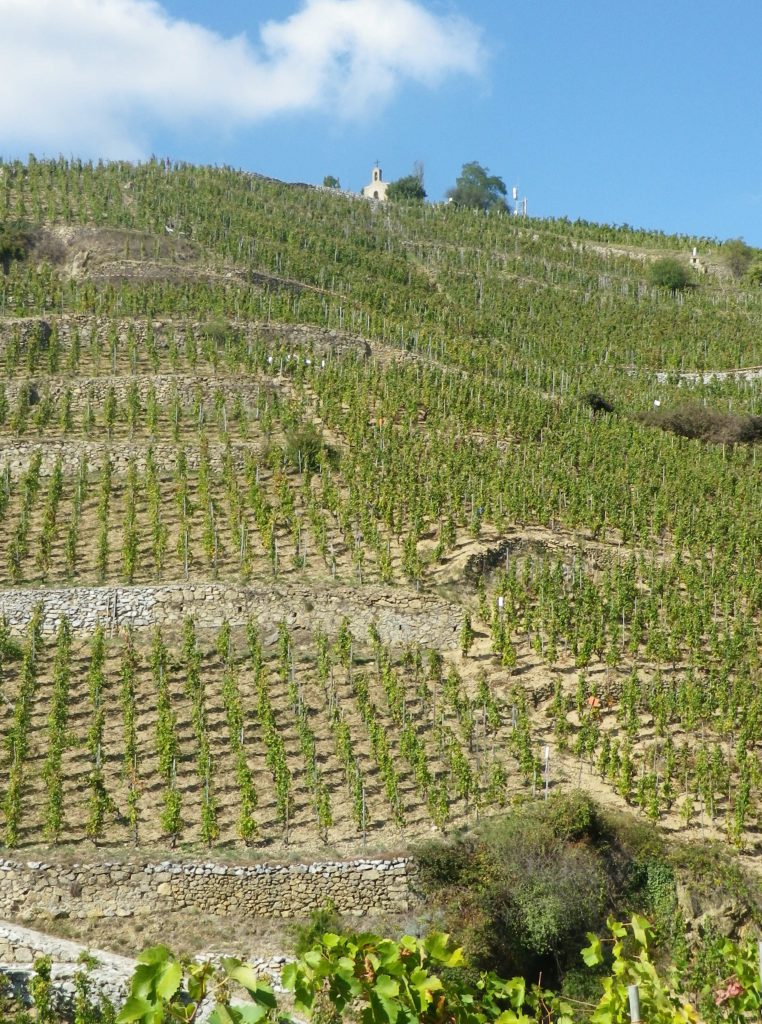
From the chapel, the challenge is safely negotiating the downhill track, instilling a new respect for those who tend this land on a daily basis. Past, or within sight of other named parcels – Les Bessards, le Meal, Les Greffieux – on the sometimes worryingly vertiginous route, the trail leads returns to the village. Here, libations are on offer to thirsty pilgrims, who can now appreciate the sacrifices made by the vintners of this paradise on the Rhone.
